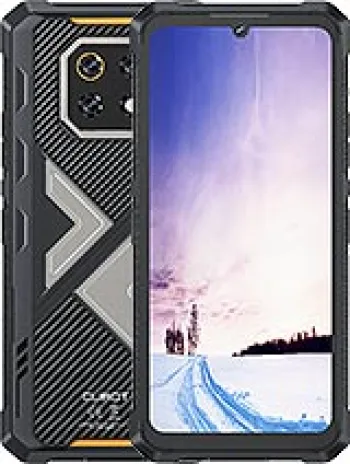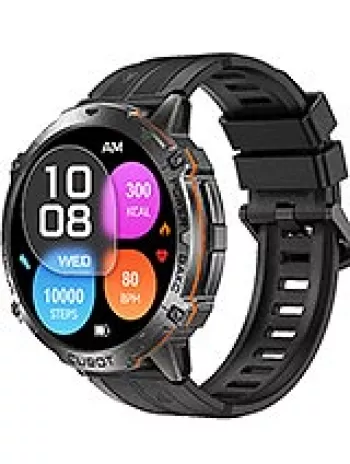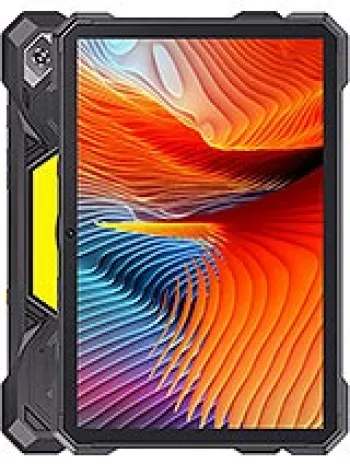
Design and Build
The Cubot Quest is a rugged phone designed for those who require a durable and resilient device. Its dimensions are 157 x 73.7 x 8.8 mm, and it weighs 216 g. The rubberized exterior offers enhanced grip and protection against drops. It’s available in eye-catching Red/Black and Black color variants, giving users some flexibility in style without compromising on strength.
Display Quality
The phone features a 5.5-inch IPS LCD screen with a resolution of 720 x 1440 pixels and an 18:9 aspect ratio. With a ~67.5% screen-to-body ratio, the display is protected by Corning Gorilla Glass 5, ensuring resistance against scratches and minor impacts. The 293 ppi density offers decent clarity, good enough for most daily tasks, albeit not groundbreaking for multimedia lovers.
Performance and Software
Under the hood, the Cubot Quest runs on a Mediatek MT6762 Helio P22 chipset. The Octa-core CPU, composed of 4x2.0 GHz Cortex-A53 and 4x1.5 GHz Cortex-A53, provides a balance between power efficiency and performance. The PowerVR GE8320 GPU handles graphics, suitable for basic gaming and apps that don’t require intensive graphical processing. Operating on Android 9.0 (Pie), the user experience is streamlined, though it's not the latest OS iteration by today's standards.
Storage and Memory
With 64GB of internal storage paired with 4GB of RAM, the Quest provides substantial space for apps, multimedia, and data. It also supports microSDXC, using a shared SIM slot, offering flexibility for those needing additional storage. This ensures users have the capability to expand as per their needs, although using the slot might require compromising on dual SIM functionality.
Camera Capabilities
The device boasts a dual rear camera setup — a primary 12 MP, f/1.8 wide lens with PDAF for fast focusing, and a secondary 2 MP sensor for depth data. Enhanced with Dual-LED flash, the camera performs adequately in various lighting scenarios. The video capability is present but not extensively detailed in specs, hinting at standard resolutions. For selfies, the phone houses an 8 MP front camera, ensuring decent quality for video calls and self-portraits.
Battery Life
The Cubot Quest is powered by a 4000 mAh non-removable battery, a decent capacity ensuring longevity across a full day's moderate use. Given its power-efficient chipset, users can expect satisfactory battery life, further supported by Android's battery optimization features.
Network and Connectivity
Supporting GSM, HSPA, and LTE technologies, the Cubot Quest offers broad network compatibility. It can connect to various 2G, 3G, and 4G bands, making it versatile for usage in different regions. Connection speeds are adequate for mobile browsing and basic streaming. Connectivity options include Wi-Fi 802.11 a/b/g/n and Bluetooth 4.2 for wireless connections. NFC is available for contactless payments but the absence of detailed radio specifications implies limited FM radio capability. USB Type-C offers modern and reversible connectivity for charging and data transfer.
Sound and Audio
The phone is equipped with a loudspeaker for media playback and calls. While specifics of the 3.5mm audio jack are unspecified, its inclusion would be greatly appreciated by users still favoring wired headphones over Bluetooth alternatives.
Sensors and Extras
The Cubot Quest incorporates a range of sensors including a rear-mounted fingerprint sensor for additional security, accelerometer, gyroscope, proximity sensor, and compass, enhancing its capability in various applications ranging from navigation to gaming.
Conclusion
The Cubot Quest emerges as a robust contender for those needing a reliable and sturdy smartphone, balancing essential features and rugged design. While it may not lead in terms of high-end specifications or the latest software, it certainly carves a niche for itself among outdoor enthusiasts and those valuing durability.
Key Features of Cubot Quest
- Robust Network Support: GSM, HSPA, LTE with multiple 4G bands for expanded coverage
- Durable Design: Protected by Corning Gorilla Glass 5
- Compact Dimensions: 157 x 73.7 x 8.8 mm, ideal for easy handling
- Touchscreen Display: 5.5-inch IPS LCD with 720 x 1440 pixel resolution
- Performance: Powered by Mediatek MT6762 Helio P22 processor and 4GB RAM
- Storage: 64GB internal storage, expandable via microSDXC
- Camera: Dual rear camera setup (12 MP main camera with f/1.8 aperture) with dual-LED flash
- Selfie Camera: 8 MP front-facing camera
- Connectivity: Features NFC, Wi-Fi, Bluetooth 4.2, and USB Type-C
- Biometric Security: Rear-mounted fingerprint sensor
- Long-lasting Battery: 4000 mAh non-removable battery
Drawbacks of the Cubot Quest
- The screen-to-body ratio is relatively low at approximately 67.5%.
- The display resolution is limited to 720 x 1440 pixels with a density of approximately 293 ppi, which may not provide the sharpest display quality.
- The device comes with the outdated Android 9.0 (Pie) operating system.
- The Mediatek MT6762 Helio P22 (12 nm) chipset, while functional, is not the most powerful option available in the market.
- The weight of the device is on the heavier side at 216 g (7.62 oz).
- While it has a hybrid dual SIM slot, using a microSD card will occupy the second SIM slot.
- The 3.5mm headphone jack is unspecified, which might be an inconvenience for users who prefer traditional headphone usage.
- The radio feature is unspecified, which could be a drawback for users who rely on it.
- There is only basic video recording capability without specific details on resolution or features.


View Also
More Phones
All Rights Reserved +14042 Phones © Mobilawy 2025

























